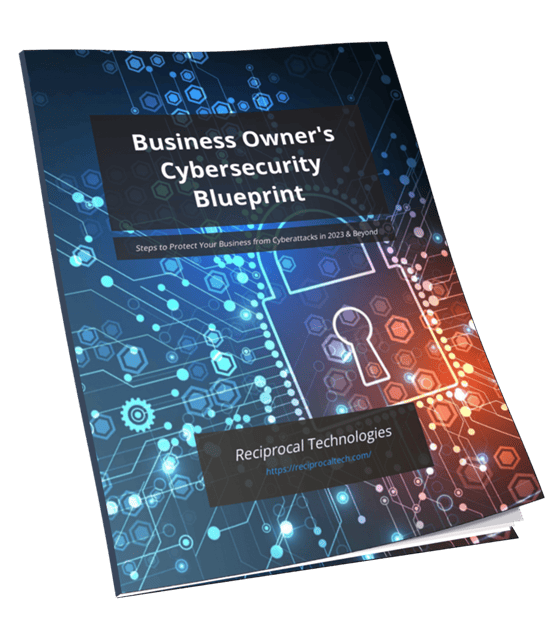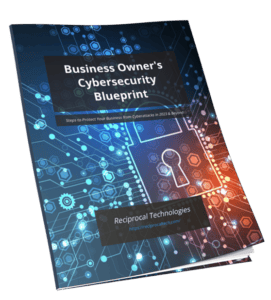Download the Business Owner's Cybersecurity Blueprint

100% Free & Secure - We will never sell your information.

The holiday season brings a surge in cyber threats, making cybersecurity a critical focus for organizations. Cybercriminals exploit the distractions and increased online activity typical of this time of year, targeting vulnerabilities to gain unauthorized access. As the holiday season gets busier, distracted and overwhelmed employees may inadvertently fall prey to phishing schemes or ransomware attacks. Proper network security in Chicago can help filter and prevent many of these attacks.
A strong incident response plan is essential for safeguarding your organization’s digital infrastructure and protecting sensitive data during these high-risk periods. Below, we’ll look at some key insights and strategies tailored for effective incident response, ensuring that businesses are prepared to deal with Chicago cybersecurity head-on.
The holiday season presents unique challenges for organizations, primarily due to the increased prevalence of seasonal cyber threats. Cybercriminals exploit user vulnerabilities during the holidays, leveraging tactics such as:
Statistics underscore the severity of the issue. Reports indicate a 25% increase in phishing attacks during the holiday season compared to other months. Organizations experience a 30% rise in ransomware incidents, driven by both heightened online activity and distracted employees.
Understanding these vulnerabilities is crucial for developing effective incident response strategies. Awareness of common cybercriminal tactics allows organizations to prepare and strengthen their defenses against potential threats during this high-risk period.
An effective Incident Response Plan (IRP) is crucial for organizations looking to combat cyber threats, especially during vulnerable times. Here’s why you need one:
Having a structured way to manage incidents is incredibly important. It helps organizations react quickly and effectively to problems, reducing risks in the process. When everyone knows their specific roles and responsibilities, communication becomes smoother among team members and stakeholders.
Effective incident response planning consists of several distinct stages, each critical for managing cyber incidents, particularly during the holiday season. Understanding these phases enables organizations to create a robust framework for cybersecurity.
In this initial stage, organizations should focus on reviewing existing security policies and conducting comprehensive risk assessments. This involves:
Detection is vital in mitigating cyber threats before they escalate. Organizations need to employ both internal and external resources to identify issues, which can include:
Once a threat is identified, swift action is necessary to minimize its impact. Effective containment strategies may involve:
This stage focuses on investigating the root cause of the incident and neutralizing threats through thorough analysis and remediation efforts. Actions include:
Resuming normal operations safely requires careful planning and execution. In this phase, organizations should:
Implementing these stages effectively enhances an organization’s cyber incident management capabilities, especially during high-risk periods like the holidays. Each phase reinforces the importance of preparedness and proactive measures in safeguarding digital assets.
IT security teams face unique challenges during the holiday season. Implementing customized strategies can enhance incident handling efficiency. Consider the following practices:
Clearly defined roles within the Incident Response Team (IRT) ensure accountability. Each member should understand their specific duties, from monitoring threats to managing communications.
Establish direct lines of communication among IRT members. Utilize tools like team messaging platforms to facilitate real-time updates and quick decision-making.
Focus training efforts on holiday-specific threats. Regular simulations can prepare team members for potential scenarios, enhancing responsiveness when incidents occur.
Use current technologies and tools effectively. Small teams can optimize existing solutions for threat detection and response, avoiding costly investments in new systems.
Maintain an updated repository of incident response procedures. This ensures quick access to guidelines during high-pressure situations, reducing confusion and streamlining actions.
Automation in cybersecurity plays a vital role in enhancing response capabilities during high-risk periods such as the holiday season. Cybercriminals often exploit user distractions, making it crucial for organizations to implement technology solutions that can swiftly detect and respond to threats.
Effective communication is a cornerstone of crisis management during cyber incidents. Clear, concise messaging within the organization and to external stakeholders is vital for maintaining trust and transparency.
Strategies include:
Understanding compliance requirements is essential for effective incident response planning during the holiday season. Organizations must align their strategies with key cybersecurity standards, particularly those outlined by regulatory bodies.
Applicable to healthcare organizations, HIPAA mandates the protection of sensitive patient information. During the holidays, increased email communications and remote work can expose vulnerabilities that may lead to non-compliance.
The FTC enforces regulations that protect consumer data. Businesses must ensure they are safeguarding customer information against breaches that can spike during high-activity periods like holidays.
Regulatory frameworks serve as a foundation for developing robust incident response plans. Key components include:
A comprehensive understanding of these compliance requirements allows organizations to create an effective incident response strategy tailored to holiday-specific risks.
Regularly review and update incident response plans to address holiday-specific threats. Consider the following enhancements:
Proactive measures ensure that organizations bolster their defenses against cyber threats.
Encourage engagement from all levels within the organization to foster a culture of cybersecurity awareness.
A robust incident readiness plan not only mitigates risks but enhances overall security posture, allowing businesses to navigate the holiday season with confidence.
During the holiday season, user distraction increases vulnerability to cyber threats such as phishing and ransomware. Cybercriminals take advantage of this heightened activity, leading to a significant rise in cyber incidents.
An effective incident response plan includes structured responses for risk mitigation, identification of threats, containment strategies, threat investigation and neutralization, and recovery procedures to safely resume operations.
IT security teams can implement customized strategies that focus on clear role assignments within the Incident Response Team (IRT) to enhance their effectiveness in managing cyber incidents during high-risk periods like holidays.
Automation enhances cybersecurity response capabilities during high-risk periods by utilizing technology solutions that aid in threat prevention, allowing organizations to respond more efficiently to potential incidents.
Effective communication is critical during a cyber incident. It ensures that all team members and stakeholders are informed and coordinated, which helps manage the crisis effectively and minimizes confusion.
Organizations seeking tech support in Chicago IL need to be aware of key regulatory requirements related to cybersecurity, such as HIPAA and FTC standards. Aligning these compliance requirements with effective incident response strategies is crucial for safeguarding data and maintaining legal obligations in an era where cybersecurity is more important than ever.
Author’s recent posts
